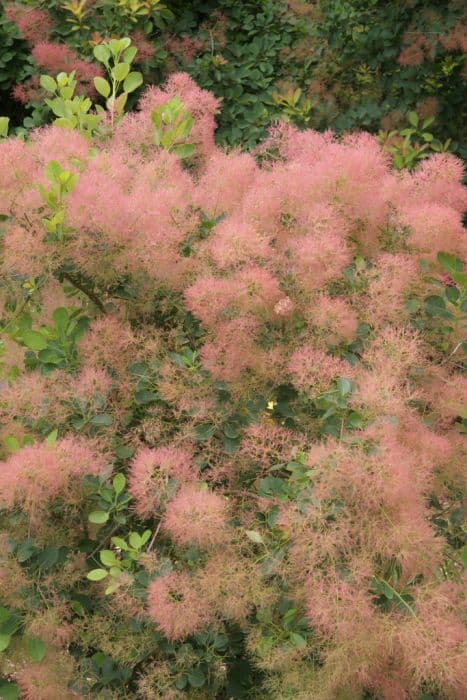Smooth Sumac Rhus glabra

ABOUT
Rhus glabra, commonly known as smooth sumac, is a deciduous shrub or small tree that is easily recognized by its compound leaves and conical clusters of red berries. The leaves of the smooth sumac are alternate, extending outward in a feather-like pattern. Each leaf is made up of several individual leaflets which are lined up on either side of a central stem. The leaflets are usually lance-shaped and have smooth edges, showcasing a vibrant green color that shifts to an intense red or orange in the fall before they are shed. The smooth sumac is also known for its flowers, which bloom in dense panicles. The flowers are small and greenish-yellow when they develop. These later give way to distinctive fruit clusters, standing out with their bright red to deep crimson color. The fruits are small, round, and are tightly packed together in conical bunches that can be visible into the late winter months. The bark of the smooth sumac is a pale gray to brown, and it has a smooth texture that becomes slightly furrowed with age. Additionally, new twigs may exhibit a reddish or velvety hue. The combination of its fruit clusters, striking autumn leaf color, and smooth bark makes the smooth sumac a notable presence in its native habitat. Its appearance can vary slightly depending on environmental conditions, but these characteristics are commonly observed in this species.
About this plant
 Names
NamesFamily
Anacardiaceae
Synonyms
Smooth Sumac, Scarlet Sumac, Common Sumac, Pennsylvania Sumac, Red Sumac, Smooth Sumach, Upland Sumac, White Shoemake, Vinegar Tree
Common names
Schmaltzia glabra, Rhus canadensis, Rhus elegans, Rhus glabra var. cismontana, Rhus cismontana, Rhus glabra var. integrifolia, Rhus glabra var. laevigata, Rhus glabra var. laciniata, Rhus glabra var. occidentalis, Rhus glabra var. persicifolia, Rhus glabra var. pubescens, Rhus glabra var. simplicifolia, Rhus glabra var. trilobata, Rhus simplex, Rhus trilobata.
 Toxicity
ToxicityTo humans
Smooth Sumac (Rhus glabra) is generally not considered highly toxic to humans. However, like other members of the cashew family (Anacardiaceae), some people may be sensitive to the plant's sap, which contains urushiol. This is the same substance found in poison ivy that can cause an allergic skin reaction in sensitive individuals. If ingested, parts of the plant, particularly the leaves and raw berries, may cause stomach irritation or discomfort in some people due to their tannin content. However, the berries have been used historically by Native Americans to make a lemonade-like drink once they are fully ripe and have been properly processed. The risk of serious toxicity from consuming parts of the Smooth Sumac plant is generally low for humans, but it is recommended to handle and consume with care, especially if one is sensitive to urushiol.
To pets
Smooth Sumac (Rhus glabra) is not commonly listed as a highly toxic plant to pets such as dogs and cats. However, as with humans, pets may have a sensitivity to the plant's sap which contains urushiol. If they come into contact with the sap or consume plant parts, they might experience similar reactions as humans, such as skin irritation or gastrointestinal discomfort. Symptoms may include vomiting, diarrhea, or drooling if they ingest parts of the plant in significant quantities. Pets with a known sensitivity to urushiol should avoid the Smooth Sumac to prevent potential skin reactions. However, serious cases of poisoning are not commonly reported in pets with this plant, and significant adverse effects from incidental ingestion are unusual.
 Characteristics
CharacteristicsLife cycle
Perennials
Foliage type
Deciduous
Color of leaves
Green
Flower color
Greenish-yellow
Height
6-15 feet (1.8-4.5 meters)
Spread
6-15 feet (1.8-4.5 meters)
Plant type
Shrub
Hardiness zones
3-9
Native area
North America
Benefits
 General Benefits
General Benefits- Landscape uses: Rhus glabra, commonly known as smooth sumac, is often used in landscaping for its attractive foliage and striking red autumn colors.
- Wildlife habitat: It provides shelter and nesting sites for birds and other small animals.
- Soil stabilization: The plant has an extensive root system that can help prevent soil erosion.
- Drought resistance: Smooth sumac is well-suited to dry conditions and can thrive with minimal watering, making it an excellent choice for xeriscaping.
- Pollinator attractant: The flowers of Rhus glabra attract various pollinators, including bees and butterflies.
- Edible parts: The fruit of smooth sumac can be used to make a lemonade-like beverage and is a traditional source of vitamin C.
- Cultural significance: Native American tribes historically used Rhus glabra for a variety of non-medicinal purposes, including dyeing and food preparation.
 Medical Properties
Medical Properties- Astringent: Rhus glabra, also known as smooth sumac, has been used traditionally for its astringent properties to wash wounds.
- Antidiarrheal: The plant's astringency also lends to its use in folk medicine for treating diarrhea.
- Gastrointestinal remedy: Herbalists have used it to treat various digestive issues due to its tannin content.
- Antioxidants: Smooth sumac is known to contain high levels of antioxidants, which may contribute to its health-promoting effects.
- Topical treatment for skin: The leaves and bark have traditionally been used in salves and poultices for skin issues.
 Air-purifying Qualities
Air-purifying QualitiesThis plant is not specifically known for air purifying qualities.
 Other Uses
Other Uses- Natural Dye: Rhus glabra's berries provide a soft, natural dye for fabrics, particularly wool, yielding shades of pale yellow to greenish-yellow tones.
- Leather Tanner: The high tannin content in the bark and leaves of Smooth Sumac has traditionally been used for tanning leather, giving it a light color and smooth finish.
- Ink and Paint: The berries can be boiled down to create a black or dark gray ink, which artists have used historically for painting or writing.
- Mordant in Textile Dyeing: The tannins in Smooth Sumac can serve as a mordant to fix dyes to textiles, ensuring that colors do not rinse out easily.
- Pipe Smoking Mixtures: The dried leaves of Smooth Sumac can be added to pipe smoking mixtures as a tobacco substitute or flavor enhancer.
- Woodworking: The wood of the Smooth Sumac is soft and can be used for small woodworking projects, such as creating boxes or wooden spoons.
- Ceremonial Use: Native American tribes have used various parts of the plant in their ceremonies, often as a smudge or incense to cleanse spiritual spaces.
- Wildlife Habitat: The dense thickets formed by Smooth Sumac provide shelter and nesting sites for birds and small mammals.
- Ornamental Landscaping: Because of its bright red fall foliage and distinctive fruit clusters, Smooth Sumac is used in landscaping for visual interest and natural beauty.
- Soil Erosion Control: The widespread root system of Smooth Sumac helps stabilize the soil and prevent erosion, particularly on slopes or in areas with loose soil.
Interesting Facts
 Feng Shui
Feng ShuiSmooth Sumac is not used in Feng Shui practice.
 Zodiac Sign Compitability
Zodiac Sign CompitabilitySmooth Sumac is not used in astrology practice.
 Plant Symbolism
Plant Symbolism- Healing: Rhus glabra, commonly known as smooth sumac, has medicinal properties and has been used traditionally to treat various ailments, symbolizing healing and wellness.
- Native American Heritage: Smooth sumac is significant in Native American cultures for its diverse uses, ranging from food to dye, representing a connection to tradition and the wisdom of indigenous practices.
- Survival and Resilience: Smooth sumac is known for its hardiness and ability to thrive in tough environments, symbolizing endurance, adaptability, and strength in the face of adversity.
- Purification: In some traditions, parts of the smooth sumac plant are used in purification rituals, making it a symbol of cleansing and renewal.
 Water
WaterSmooth Sumac (Rhus glabra) is drought-tolerant once established and does not require frequent watering. During the first growing season, water the plant thoroughly once a week to help establish a strong root system. Provide about 1 to 1.5 gallons of water for each watering session, ensuring that the soil is moist but not waterlogged. Once mature, Smooth Sumac typically relies on natural rainfall and needs supplemental watering only during prolonged dry spells. Check the soil moisture regularly, and water approximately every two weeks if there has been no significant rainfall.
 Light
LightSmooth Sumac thrives in full sun conditions, requiring at least 6 hours of direct sunlight daily. The ideal spot for this plant is in an open area without significant shade from buildings or larger trees that could block the sunlight. Ensuring ample sunlight contributes to the plant's health and vibrant fall foliage coloration.
 Temperature
TemperatureSmooth Sumac is adaptable to a wide range of temperatures and is hardy in USDA zones 3 through 9. It can survive minimum winter temperatures down to -40°F and tolerates summer conditions up to 100°F or higher. The ideal temperature range for Smooth Sumac is between 60°F and 90°F, providing the best growth and development conditions.
 Pruning
PruningSmooth Sumac benefits from occasional pruning to maintain shape and to remove any dead or damaged wood. The best time to prune is late winter or early spring before new growth begins. Pruning can be done annually to encourage a more compact growth habit and to promote vigorous, healthy shoots. Always use clean, sharp tools to make precise cuts.
 Cleaning
CleaningAs needed
 Soil
SoilSmooth sumac thrives in well-drained, loamy soil mixed with sand and organic matter to improve drainage. A slightly acidic to neutral pH of 6.0 to 7.0 is ideal for this plant. It is tolerant of various soil types, but the best mix would be two parts loam, one part sand, and one part compost.
 Repotting
RepottingSmooth sumac typically does not require frequent repotting and prefers to remain undisturbed. It can be repotted every 3-4 years, or when it significantly outgrows its current container. The best time to repot is in late winter or early spring before new growth begins.
 Humidity & Misting
Humidity & MistingSmooth sumac is tolerant of a wide range of humidity conditions. It thrives best in moderate humidity but is quite adaptable and does not require any special humidity considerations, making it suitable for various outdoor environments.
 Suitable locations
Suitable locationsIndoor
Provide full sun and good airflow for indoor sumac.
Outdoor
Plant in full sun, well-drained soil; tolerate drought.
Hardiness zone
3-9 USDA
 Life cycle
Life cycleRhus glabra, commonly known as smooth sumac, begins its life cycle when seeds disperse, often by birds that eat the berries, and germinate in favorable conditions, usually in full sunlight on well-drained soils. Seedlings emerge in the spring and the plant enters a vegetative growth phase, where it develops compound leaves and a deep taproot, along with lateral roots. As it matures, typically in its third year, smooth sumac develops into a shrub or small tree, producing upright clusters of small, greenish-yellow flowers. Following pollination, typically by wind, the flowers develop into distinctive red berry-like drupes, which persist through winter and serve as food for wildlife. The plant can also reproduce vegetatively through root suckers, creating dense colonies that can dominate an area. Smooth sumac lives for about 10 to 20 years, and as it senesces, it returns nutrients to the soil while making room for new growth.
 Propogation
PropogationPropogation time
Spring to Summer
Smooth Sumac (Rhus glabra) is commonly propagated through seed, which is often the most popular method due to its simplicity and effectiveness. The best time for seed propagation is in the fall, after the seeds have matured. To propagate Smooth Sumac by seed, one should first clean the seeds from the berry-like fruit and then subject them to cold stratification, which involves placing them in a moist substrate like sand or peat moss, then refrigerating for approximately 90 days (about 3 months) to break seed dormancy. After stratification, the seeds can be sown in a well-draining soil mix and placed in a bright, warm location. Germination typically occurs within a few weeks, provided the soil is kept consistently moist but not waterlogged. Once seedlings have developed and are large enough to handle, they can be transplanted to their permanent locations.

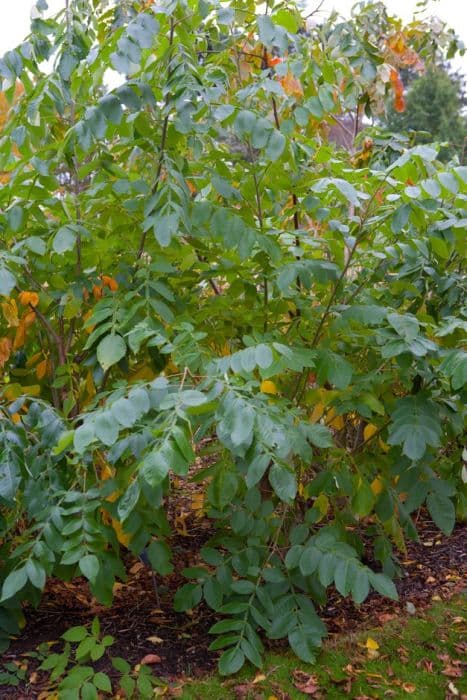
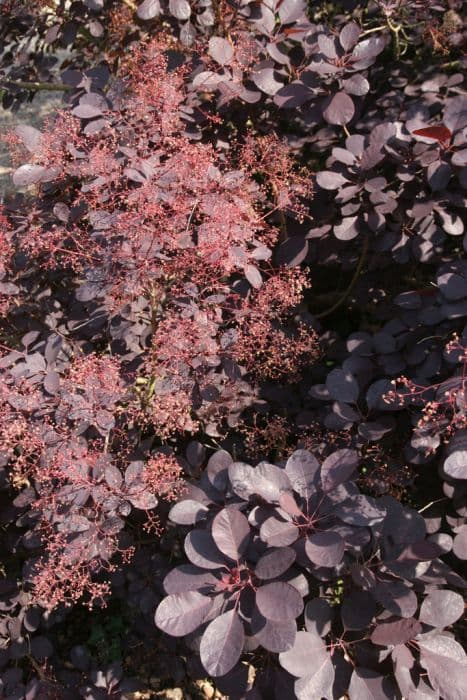

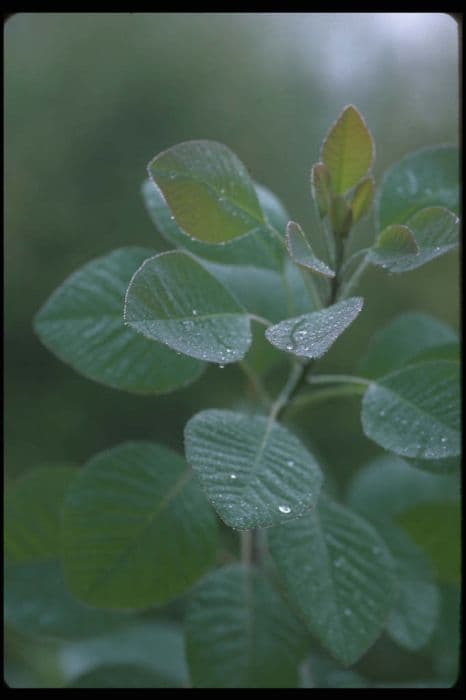
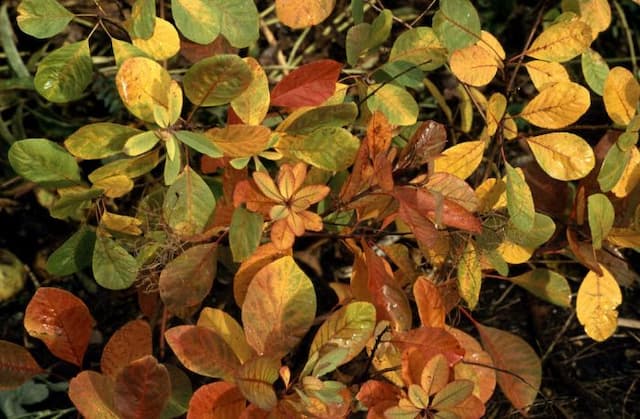
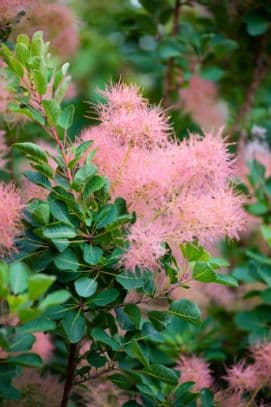
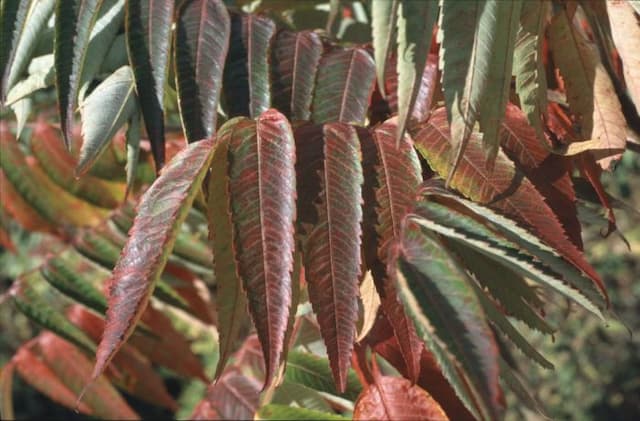
![Smoke tree [Golden Spirit]](/_next/image?url=https%3A%2F%2Fplants-admin.emdemapps.com%2Fimages%2Fplants%2F%2Fimages%2F604b63b450a12.png&w=640&q=75)
